J A Drewe
Reshaping surveillance for infectious diseases: less chasing of pathogens and more monitoring of drivers
Drewe, J A; George, J; Häsler, B
Authors
J George
B Häsler
Contributors
Julian Drewe
Researcher
Abstract
Animal health surveillance, despite its name, tends to focus on looking for disease. Often this involves searching for cases of infection with known pathogens ('pathogen chasing'). Such an approach is both resource intensive and limited by the requirement for prior knowledge of disease likelihood. In this paper, the authors propose the gradual reshaping of surveillance towards the systems level, focusing on the processes ('drivers') that promote disease or health, rather than on the presence or absence of specific pathogens. Examples of relevant drivers include land-use change, increasing global interconnectedness, and finance and capital flows. Importantly, the authors suggest that surveillance should focus on detecting changes in patterns or quantities associated with such drivers. This would generate systems-level, risk-based surveillance information to identify areas where additional attention may be needed, and, over time, inform the implementation of prevention efforts. The collection, integration and analysis of data on drivers is likely to require investment in improving data infrastructures. A period of overlap would allow the two systems (traditional surveillance and driver monitoring) to be compared and calibrated. This would also lead to a better understanding of the drivers and their linkages, and thereby generate new knowledge that can improve surveillance and inform mitigation efforts. Since surveillance of drivers may give signals when changes are occurring, which could act as alerts and enable targeted mitigation, this might even enable disease to be prevented before it happens by directly intervening in the drivers themselves. Such surveillance focused on the drivers could be expected to bring additional benefits, since the same drivers promote multiple diseases. Further, focusing on drivers rather than pathogens should enable control of currently unknown diseases, making this approach particularly timely, given the increasing risk of emergence of new diseases.
Citation
Drewe, J. A., George, J., & Häsler, B. (2023). Reshaping surveillance for infectious diseases: less chasing of pathogens and more monitoring of drivers. Scientific and Technical Review, 42, 137-148. https://doi.org/10.20506/rst.42.3357
| Journal Article Type | Article |
|---|---|
| Acceptance Date | Feb 28, 2023 |
| Online Publication Date | May 25, 2023 |
| Publication Date | May 25, 2023 |
| Deposit Date | May 30, 2023 |
| Publicly Available Date | Jun 7, 2023 |
| Journal | Scientific and Technical Review |
| Electronic ISSN | 0253-1933 |
| Publisher | World Organisation for Animal Health |
| Peer Reviewed | Peer Reviewed |
| Volume | 42 |
| Pages | 137-148 |
| DOI | https://doi.org/10.20506/rst.42.3357 |
Files
Reshaping Surveillance
(268 Kb)
PDF
Licence
http://creativecommons.org/licenses/by/3.0/
Publisher Licence URL
http://creativecommons.org/licenses/by/3.0/
Version
VoR
You might also like
The importance of fine-scale predictors of wild boar presence in an isolated population
(2022)
Journal Article
Downloadable Citations
About RVC Repository
Administrator e-mail: publicationsrepos@rvc.ac.uk
This application uses the following open-source libraries:
SheetJS Community Edition
Apache License Version 2.0 (http://www.apache.org/licenses/)
PDF.js
Apache License Version 2.0 (http://www.apache.org/licenses/)
Font Awesome
SIL OFL 1.1 (http://scripts.sil.org/OFL)
MIT License (http://opensource.org/licenses/mit-license.html)
CC BY 3.0 ( http://creativecommons.org/licenses/by/3.0/)
Powered by Worktribe © 2025
Advanced Search
